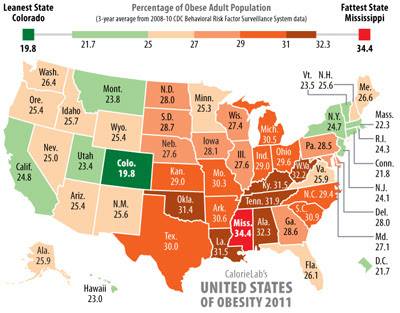Two vignettes from my work this month point to a current trend in product design: designers and engineers are looking hard for ways to reduce the weight of the products they design.
Mouse
Two weeks, ago, I noticed that my computer mouse wasn’t working quite right. Occasionally, mouse clicks were registering late, or not at all. I did not really want to drive to a store to buy a replacement — the fuel costs of the trip would be a significant fraction of the cost of a mouse — so I ordered a mouse from an online store. I ordered two music CDs with it in order to reach the store’s free shipping threshold. When the box arrived today, its total weight was less than 1 pound. The mouse itself weighed in at an impressively light 60 grams.
It arrived just in time too, as my old mouse had declined to the point of spontaneously double-clicking at unpredictable times. The old mouse, which I had used for only two years, was an already light 100 grams — light, that is, by the standards of 2009. But in two years, the industrial designers managed to shave 40 percent off that weight. I wondered whether the light weight of the mouse would make it more difficult to do fine tracking, for the single-pixel tolerances I need in graphic design, for example, but it actually wasn’t any harder to pick out the right pixels with a 60-gram mouse than it had been with the 100-gram mouse that I had before (before it started to get wonky, that is).
The potential disadvantage of a lightweight device is that the slightest impact can knock it out of position, but at my desk, the mouse sits on the extended keyboard shelf, out of danger, so it’s not so likely to get bumped by accident. I do notice it takes less energy to move the lighter mouse around.
Book
A new version of SAS (9.3) came out this month, so I am preparing a new edition of my book Professional SAS Programmer’s Pocket Reference. As I work on the content of the book, the people involved in the book printing are looking for ways to make the new 6th edition lighter than the 5th edition.
When the 1st edition of the book came out in 1994, it weighed about 400 grams, or nearly a pound. At that point, no one paid much attention to how much a book weighed, and the publisher opted to make the book bigger than it needed to be in the hope that the larger size would bring it more attention on the bookshelves.
By the time we got to the 5th edition, the weight had shrunk to 210 grams. That happened even though the book was expanded considerably along the way. Paper mills have been hard at work on lighter-weight book papers, and the latest guess is that the 6th edition may weigh just 160 grams.
Lighter books are important in the book business because of higher fuel costs. The book publisher and distributor may spend more for shipping a copy of a book than it paid for printing it. The biggest part of the cost of a printed book is the cost of the paper, which has to be delivered from the paper mill to the printing plant, so there are costs on that side of the process too (though the paper-shipping costs are less if the book printer is near one of the Great Lakes, so that the paper can be shipped by water).
It is mostly the cost of fuel that is making product designers so keenly aware of the weight of their products. Fuel prices have tripled in barely a decade and it is fair to guess that they will double again in the coming decade. But customers don’t want to pay more if they don’t have to, so if there is any way to squeeze some of the weight out of a product, we will hope to find it.
Air travelers are as much a part of this process as the product designers are. If you only get 65 pounds, more or less, then every ounce matters. If you are preparing to travel by air, you may find yourself weighing and comparing your possessions.
The level of detail that goes into making products lighter is surprising. A bottle of water is 1 gram lighter because engineers redesigned the cap to be 4 millimeters shorter. Yes, that 1 gram matters. We have come full circle from the “heavy duty” era of half a century ago, when the heavy weight of a product was held to be reassuring. Today, many purchasers are happy to pay extra for lighter versions of products.
This trend will accelerate as energy costs increase. If a mouse can be lighter, why can’t a steering wheel be lighter — or a lamp shade, a mirror, or a paper clip? In each case, you can be sure that product designers are already looking into it.
This post originally appeared in Rick Aster’s World.



